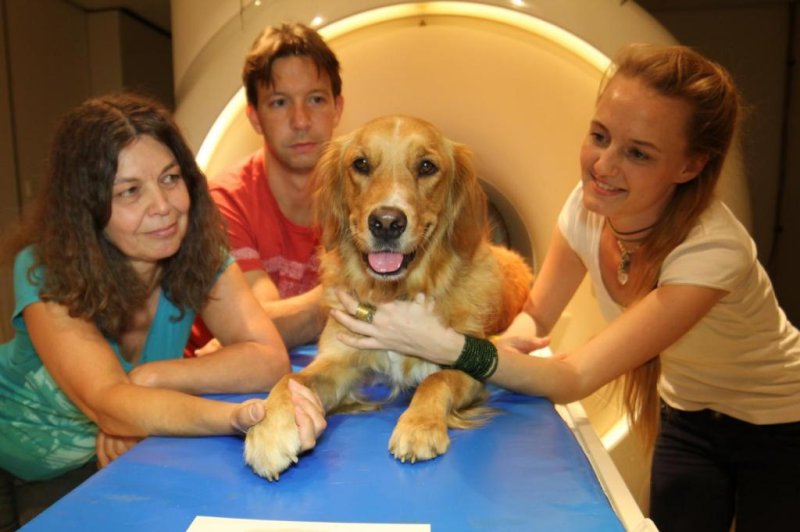Researchers observed the activity in the brains of dogs as the animals listened to different words said with varying intonations. Photo by Enik Kubinyi/Eötvös Loránd University
Aug. 3 (UPI) -- For thousands of years, humans have been talking to dogs. Through the years, dozens of studies have confirmed what many dog owners already knew, that dogs are capable of understanding both words and intonation.
But until now, researchers weren't exactly sure how dog brains process humans words and voice. New findings, published Monday in the journal Scientific Reports, suggest dogs process speech hierarchically, just like humans.
Testing showed dogs process intonations first, at lower stages, and word meanings at higher stages, researchers said.
For the study, scientists used functional magnetic resonance imaging, or fMRI, to observe dog brain activity as they listened to words of praise. To do this, they used phrases such as "well done" and "that's it," as well as unknown, neutral words like "as if" and "yet," uttered in both praising and neutral tones.
"Exploring speech processing similarities and differences between dog and human brains can help a lot in understanding the steps that led to the emergence of speech during evolution," lead study author Anna Gábor said in a news release.
"Human brains process speech hierarchically: first, intonations at lower-, next, word meanings at higher stages," said Gábor, postdoctoral researcher at Eötvös Loránd University in Hungary.
Previously, researchers discovered that dogs separate intonation, or variation in pitch, from word meaning. But researchers said that how exactly dog brains process these qualities hierarchically was unclear.
"To find it out, we used a special technique this time: we measured how dog brain activity decreases to repeatedly played stimuli," Gábor said. "During brain scanning, sometimes we repeated words, sometimes intonations. Stronger decrease in a given brain region to certain repetitions shows the region's involvement."
The test results proved dogs process intonations at lower stages, primarily in subcortical regions. At higher stages, cortical regions help dogs process different words. Surprisingly, older dogs were less likely to process speech at higher stages than younger dogs.
Researchers suggest it's not clear whether hierarchical processing used by dogs was developed for speech or is part of a broader neural processing strategy.
"The hierarchy following intonation and word meaning processing reported here and also in humans may reflect a more general, not speech-specific processing principle," said co-author Attila Andics, a postdoctoral research fellow at ELTE.
"Simpler, emotionally loaded cues -- such as intonation -- are typically analyzed at lower stages; while more complex, learnt cues -- such as word meaning -- are analyzed at higher stages in multiple species," Adics said. "What our results really shed light on is that human speech processing may also follow this more basic, more general hierarchy."















